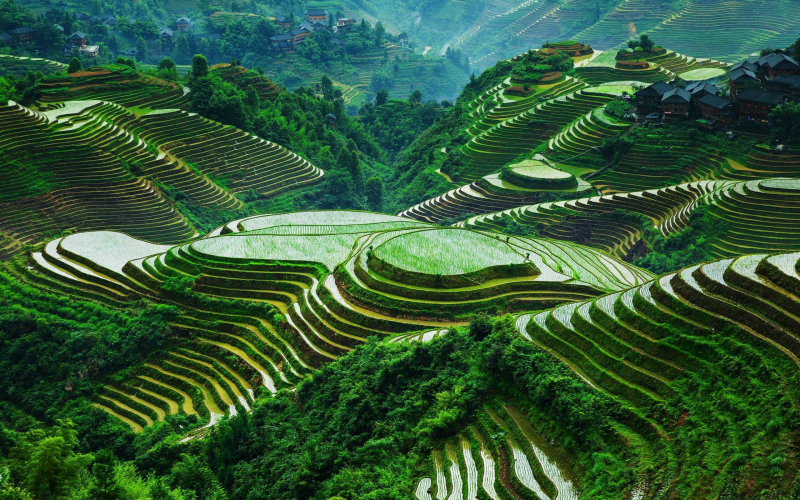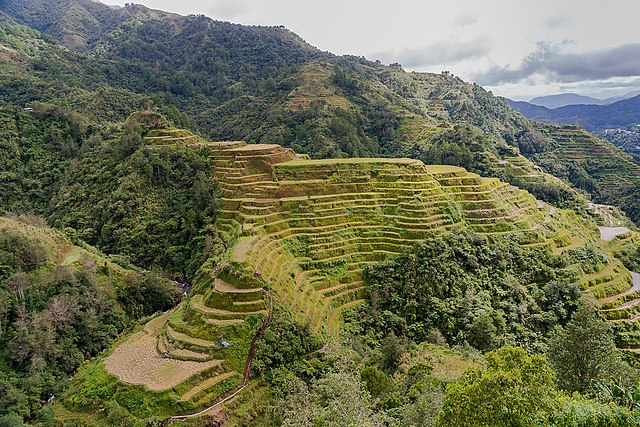Banaue Rice Terraces
Banaue Rice Terraces were built by the indigenous inhabitants of Ifugao centuries ago and were designated a National Cultural Treasure by the government in 1973.
The rice terraces are located on the island of Luzon's Cordilleras. The Ifugao, wet-rice agriculturalists who began building the terraces during the 1st century CE, have long lived in the secluded territory around 220 miles (350 km) from Manila. Despite having just rudimentary tools, the Ifugao built an engineering marvel: a massive network of rice terraces supported by an intricate irrigation system. According to sources, the terraces, which resemble steps cut into the slope, encompass over 4,000 square miles (10,360 square kilometers), and their entire length is believed to be approximately 12,500 miles (20,100 kilometers), almost half the Earth's diameter. While the rice terraces were crucial to the Ifugao economy, they also performed a cultural purpose, necessitating extensive community participation.
These terraces represent the Ifugao people's culture, which was heavily impacted by rice farming and agriculture. The importance of these terraces may be seen in the numerous agricultural ceremonies associated with rice production. The traditional and indigenous techniques used to create the terraces demonstrate the Ifugao people's great understanding of earthwork, masonry, irrigation, and the maintenance of the rice terraces' integrity.
Due to the existence of contemporary constructions in the region, the Banaue Rice Terraces are not listed on the UNESCO World Heritage List under the Rice Terraces of the Philippine Cordilleras. Two of the five named, however, are not far distant — the Batad Rice Terraces and the Bangaan Rice Terraces. The Banaue Rice Terraces may be observed from many viewpoints along the main route (Nueva Vizcaya-Ifugao-Mountain Province Road).
Location: Ifugao, Philippines









